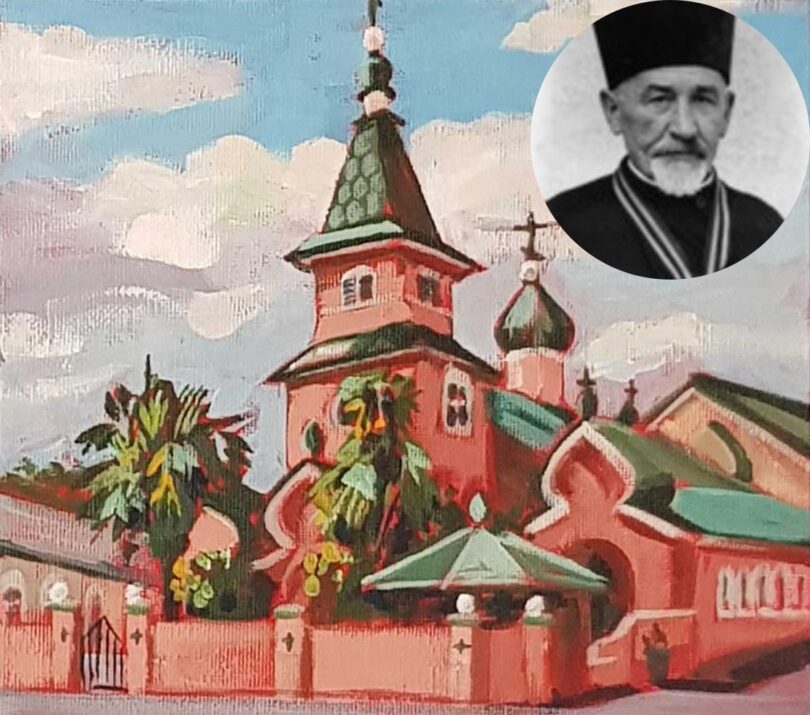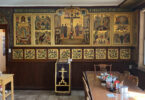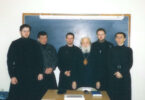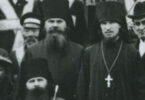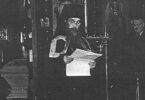Fr. Valentin was born into a priest’s family in Ekaterninoslav (now Dnipro, Ukraine). Beginning in 1899, he ministered as a military chaplain. In 1905, he graduated from seminary. He was wounded twice during World War I and was decorated with the Order of St. George. During the Russian Civil War, he became the chief military priest in Admiral Kolchak’s Second Siberian Army, with 108 priests under his leadership.
After the end of the Civil War in 1923, Fr. Valentin came to Australia. A couple of years later, he was joined by his family. Fr. Valentin worked in mines and as a train stoker. In 1932, he became the rector of St. Nicholas parish in Brisbane. Through his efforts, the first Russian Church in Australia, St. Nicholas Cathedral, was built in Brisbane in the memory of Holy Royal Martyrs. During World War II, Fr. Valentin was placed under house arrest due to his sympathies with fascist ideology.
Fr. Alexander Shabasheff, another former Russian military priest and Fr. Valentin’s predecessor in Brisbane, maintained good relations with the local Anglican clergy. Canon David John Garland particularly helped a lot to the Russian refugees. He often attended services at the St. Nicholas Cathedral, wearing vestments gifted to him by Patriarch Damianos of Jerusalem. Frs. Alexander and Valentin, while attending solemn Anglican services at the invitation of the Anglicans, were silently present in the church, vested in their epitrachelia and phelonia. In 1934, responding to this practice, Metropolitan Anthony (Khrapovitskii) explained that because the Anglicans were not united with the Orthodox Church and since there was no decision by the whole Orthodox Church concerning their orders, no one could pray with them while vested, but only while wearing the kamilavkion (assuming one had one). Nevertheless, as late as 1951, Fr. Valentin sent photographs to Fr. George Grabbe at the Synod of Bishops showing the celebrations at the Russian parish in Brisbane where the Anglican Archbishop was in the procession side by side with Bishop Feodor (Raevskii), the ruling ROCOR hierarch of Australia. The latter tried to maintain good relations with Anglicans, who had given a great deal of help to the newly arrived Russian refugees.
Similar instances of practical interaction between ROCOR clergy and non-Orthodox Christians were addressed at the 1953 Council of Bishops, which adopted a directive “Regarding the Behavior of an Orthodox Priest towards Heterodox.” Now, the canon law commission of the Inter Council Assembly of the Russian Church is developing similar instructions for the clergy of the Russian Church, considering the ROCOR’s practice.
Sources:
Andrei Psarev, “‘The Soul and Heart of A Faithful Englishman is not Limited by Utilitarian Goals and Plans’: the Relations of Metropolitan Anthony Khrapovitskii with the Anglican Church,”Historical Studies of the Russian Church Abroad.
I. Dmitrovskii-Baikov, “Russkie v Kvinslande: Vozvedenie novogo khrama v Brisbene”[Russians in Queensland: The Erection of New Church in Brisbane], Rossia v kraskah[Russia in color].
Related Link:
St Nicholas Cathedral in Queensland celebrates its centennial
Metropolitan Anthony (Khrapovitskii),“Blessing of the All-Russian Fascist Party.”Historical Studies of the Russian Church Abroad.

